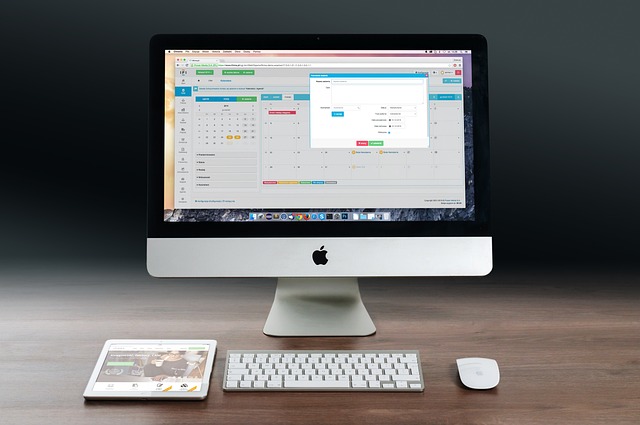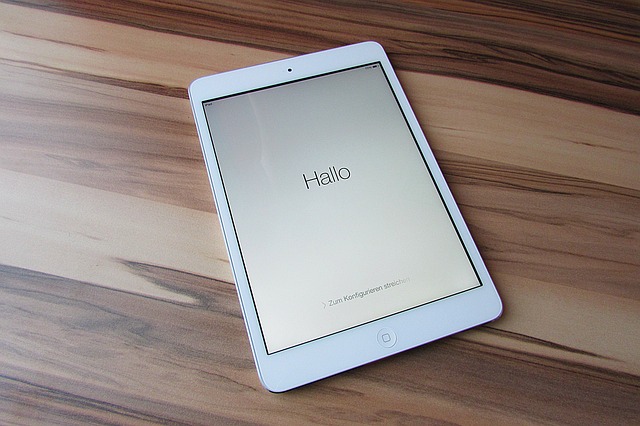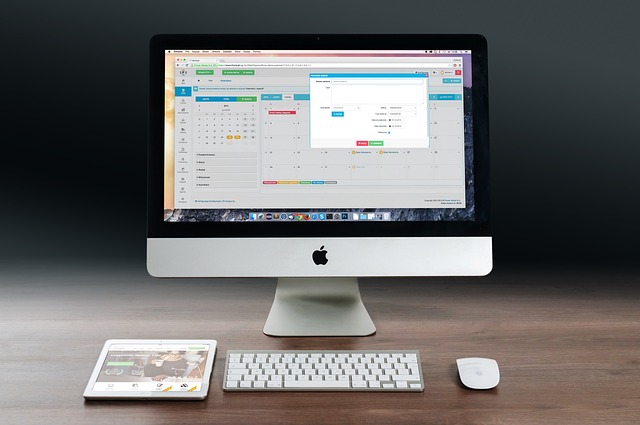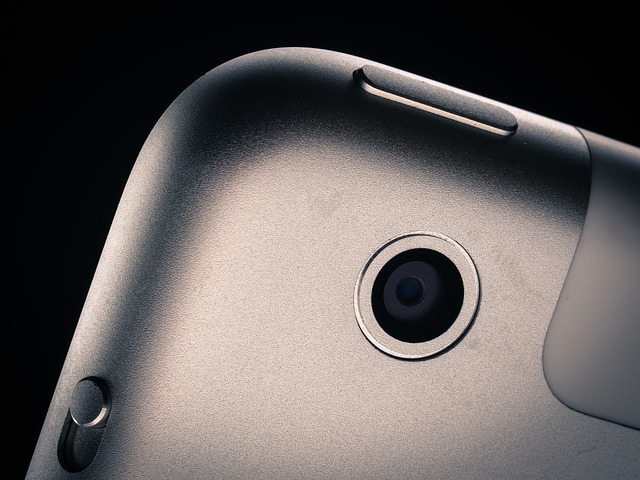To effectively and safely replace an iPad battery, begin by obtaining a genuine replacement battery for your specific model. Ensure your device is fully discharged to eliminate electrical risks during the process. Use precision tools like screwdrivers and a spudger to carefully open the casing, being mindful not to damage any components. Document the positions of screws, remove the back cover, and detach the battery connector and other cables securely attached to the old battery. Organize all parts on an anti-static mat to prevent loss. Install the new battery in its designated spot, aligning it with its original marks, and reconnect it to the logic board. Secure it with the correct screws, ensuring a snug fit and proper alignment. Replace the back cover, tighten all screws, and allow your iPad to charge for at least two hours post-replacement to calibrate the battery meter accurately. This process will enhance device performance and extend the life of your iPad's new battery. Always follow a reliable guide or service documents specific to your iPad model to avoid any complications. Regularly calibrating the battery and avoiding extreme temperatures and excessive energy usage will further maintain its health and longevity. Remember, if you're not confident in performing the repair yourself, consider seeking professional assistance to ensure the task is done correctly.
Navigating the modern digital landscape hinges on the reliability of our devices, particularly when it comes to their batteries. A tablet’s longevity is often judged by its battery performance, and an iPad’s endurance is no exception. This comprehensive guide addresses the nuances of your iPad’s battery life, offering insights on when a replacement might be necessary. We’ll equip you with all the essential tools and knowledge to prepare for the task at hand, ensuring a seamless and safe battery swap. From understanding your device’s performance metrics to mastering the post-replacement calibration process, learn how to replace your iPad battery effectively, thereby extending its service life and enhancing overall functionality.
- Understanding Your iPad's Battery Life and Performance
- When to Consider Replacing Your iPad Battery
- Preparing for iPad Battery Replacement: What You Need
- Step-by-Step Guide to Safely Replace an iPad Battery
- Disassembling Your iPad with Precision: Safety First
- Installing the New Battery in Your iPad: A Step-by-Step Process
- Post-Replacement: Calibrating Your iPad's Battery and Maximizing Its Lifespan
Understanding Your iPad's Battery Life and Performance

When your iPad’s battery performance starts to wane, it’s a cue that it might be time to consider replacing the battery. Monitoring your device’s battery life is crucial for maintaining optimal performance and ensuring you have uninterrupted access to your digital tools when needed. To understand your iPad’s battery life, pay close attention to the battery health data provided by iOS settings. This information gives you a clear picture of the battery’s capacity relative to its design specifications. Regularly check this metric, as it will guide you on whether a replacement is necessary. Additionally, observe your usage patterns and note any significant changes in how long your iPad stays powered between charges. If you notice a decrease in stamina that can’t be attributed to an increase in app usage or screen brightness, it may indicate battery degradation. Replacing an iPad battery is a task that can be performed by a professional or as a DIY project for those comfortable with minor electronics repair. Regardless of the route you choose, understanding your device’s battery life and performance is key to making an informed decision on when to replace your iPad battery to restore its efficiency and longevity.
When to Consider Replacing Your iPad Battery

When your iPad’s performance starts to wane or its battery life diminishes, it may be time to consider replacing the battery. Over time, lithium-ion batteries in devices like iPads naturally degrade and can no longer hold a charge as effectively as they once did. This degradation is a normal part of a battery’s lifecycle, but it can significantly impact your device’s usability. If you notice that your iPad is not lasting as long on a single charge as it used to, or if it’s shutting down unexpectedly under moderate usage, these could be signs that the battery needs replacement. It’s also worth evaluating your iPad’s battery health if you consistently find yourself hunting for an outlet during the day. Apple iPads come with a built-in Battery Health feature in the Settings app, which can help you determine whether your battery is holding less charge than it once did or if its maximum capacity is significantly reduced. This feature can guide you on the condition of your iPad’s battery and advise whether a replacement would improve your device’s performance and extend its functional lifespan. Replacing an iPad battery, especially for newer models, is typically a job best left to professional technicians or Apple service providers. They have the expertise and genuine parts required to ensure that the replacement is done correctly, preserving your device’s functionality and longevity. DIY replacements can be risky and may void warranties or lead to further issues with your device. Therefore, if you suspect it’s time to replace your iPad battery, consider seeking professional assistance to ensure a safe and efficient repair.
Preparing for iPad Battery Replacement: What You Need

When planning to replace your iPad battery, preparation is key to ensuring a smooth process. Begin by gathering the necessary tools and components. You’ll need a suitable replacement battery compatible with your iPad model, a set of precision screwdrivers, a suction handle for adhesive removal, a spudger or plastic opening tool, and an anti-static wrist strap to prevent electrostatic discharge (ESD) during the procedure. It’s crucial to have the correct battery for your specific iPad model, as each has a unique size and shape. Ensure you purchase from a reputable supplier to avoid counterfeit parts that could damage your device.
Before proceeding with the replacement, back up your iPad using iCloud or iTunes to avoid data loss. Once backed up, turn off your device to reduce the risk of electrical current during disassembly. Remove your SIM card and any additional accessories before entering into the disassembly process. With all the tools and preparations in place, you’re now ready to carefully take apart your iPad to replace the battery. Follow the repair guide specific to your model, as each iPad has its own set of steps and potential challenges. Remember to follow safety precautions throughout the process, including handling components with clean, dry hands and working in a well-lit, static-free environment. With these preparations complete, you’re equipped to successfully replace your iPad battery and restore your device to full functionality.
Step-by-Step Guide to Safely Replace an iPad Battery

To safely and effectively replace your iPad battery, follow this meticulous step-by-step guide. Begin by powering down your device and ensuring it has less than 50% charge to prevent any risk of electrical current while disassembling. Locate the screws on the back of your iPad; note their positions as you’ll need to remove them later. Use a pry tool to gently open the iPad’s casing, starting from one corner and carefully working your way around the device. Be cautious not to apply too much force to avoid cracking the screen or damaging internal components.
Once the back cover is removed, disconnect the battery connector from the logic board, and then proceed to remove the screws that hold the battery in place. Carefully take out the old battery, taking note of its position and orientation for when you install the new one. Install the new battery by aligning it with the marks indicating its original position. Reattach the battery connector, making sure it’s securely connected to the logic board. Now, reverse the process: reinstall the screws, replace the back cover, and use a plastic tool to delicately snap the casing back into place. Finally, charge your newly battery-equipped iPad for at least 2 hours before turning it on to ensure the battery calibrates correctly and to verify that your replacement was successful. Always refer to Apple’s service documents or a trusted repair guide when performing this procedure, as opening your device can void its warranty and may cause damage if not done properly.
Disassembling Your iPad with Precision: Safety First

When embarking on the process of replacing your iPad battery, safety and precision are paramount. Before disassembling your device, ensure it is powered off and that its battery level is below 20%, as operating with a higher charge can pose potential risks during the repair process. Apple’s iPads are designed with specific components and adhesives; thus, a careful and methodical approach is necessary to avoid damage to the tablet or injury to yourself.
To safely disassemble your iPad, begin by removing its outer casing, which typically involves unscrewing or prying around the edges with a plastic opening tool. Be gentle as you work, as excessive force can lead to cracked screens or damaged internal components. Next, locate and carefully detach the battery connector, LCD cable, and any other cables securing it within the device. It’s crucial to keep track of all screws and parts as you remove them; placing them in a organized manner on a anti-static mat will prevent loss or mix-up. Once the rear panel is off and the battery is disconnected, proceed with caution, as the battery may still hold some charge. Always refer to a reputable guide or use a replacement kit specifically designed for your iPad model to ensure a seamless and safe battery replacement process.
Installing the New Battery in Your iPad: A Step-by-Step Process

When your iPad’s battery life starts to wane, replacing the battery can restore its performance and longevity. This guide will walk you through the step-by-step process of installing a new battery in your iPad. Before you begin, ensure you have the correct replacement iPad battery compatible with your device model, suitable tools like a suitable screwdriver set, and a pry tool or spudger. Additionally, it’s crucial to discharge your device completely before proceeding with the replacement to avoid any risks of electrical shorts during the repair process.
To start, power off your iPad and remove its back cover by unscrewing the screws securing it. Carefully disconnect the battery connector from the logic board, noting where the cables are connected for reassembly. With the back cover and battery connector out of the way, locate the screws holding the battery in place. Remove these screws and gently lift the old battery from its position. Take extra care to handle the battery safely, avoiding contact with metal objects or sharp edges to prevent any electrical shorts or injury.
Once the old battery is removed, place the new iPad battery in its designated spot, ensuring it’s correctly aligned with the battery compartment. Secure the battery with the screws you removed earlier, tightening them to the manufacturer’s specified torque to avoid damaging the battery or the device. After reinstalling the battery, reconnect it to the logic board and replace the back cover, making sure it is firmly in place and all screws are tightly secured. Finally, charge your iPad with the new battery for at least two hours before using it to ensure the battery calibrates properly. With these steps followed diligently, you can successfully replace your iPad battery and enjoy extended usage without worrying about battery life constraints.
Post-Replacement: Calibrating Your iPad's Battery and Maximizing Its Lifespan

Once you’ve successfully replaced your iPad battery, calibrating it is a crucial step to ensure accurate battery readings and maximize its lifespan. Calibration involves training your iPad to recognize the true capacity of the new battery. This process helps in aligning the battery meter with the actual battery charge, which can be slightly off after replacement. To begin, fully charge your iPad, then use it until it shuts down automatically due to low power. Afterward, charge it until it reaches 100% again. Repeat this cycle at least two more times. This pattern of charging and discharging allows the system to recalibrate. Remember, maintaining a regular charge cycle, such as recharging before the device reaches zero percent and not overcharging past 100%, will prolong your iPad’s battery life. Additionally, avoiding extreme temperatures and minimizing application use that drains power excessively can further enhance the longevity of your newly installed battery. For those who have replaced their iPad battery themselves or opted for professional service, these post-replacement steps are essential in ensuring the device performs optimally and maintaining the health of the battery for as long as possible.
Replace iPad battery concerns effectively with the comprehensive guide provided. By understanding your device’s battery life and performance, you can pinpoint when a replacement is necessary. The article meticulously outlines the preparations required for an iPad battery swap and offers a detailed step-by-step guide to perform this task safely. With precision instructions on disassembling and a clear process for installing the new battery, your iPad will be revitalized. To ensure optimal performance and longevity, post-replacement calibration is critical. Follow these guidelines to successfully replace your iPad battery and enhance its efficiency.
